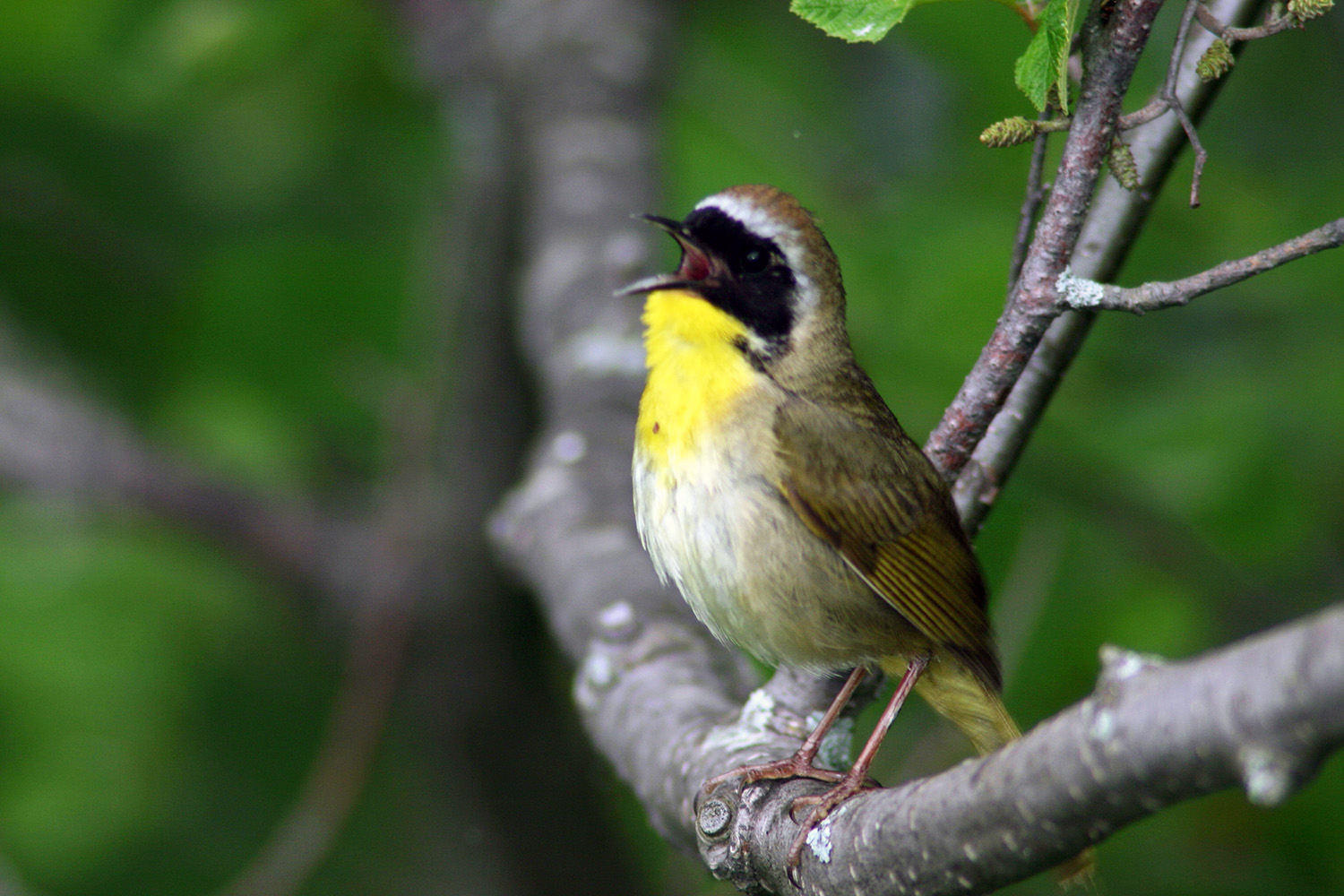Péter Sólymos, a statistical ecologist with the ABMI, Boreal Avian Modelling project, and the U of A, brings us a guest post about his team’s new paper on point count methods for sampling boreal birds.
Humans attach more value to rare things, but in conservation biology, rarity often implies an elevated risk. For example, smaller populations are more prone to being affected by disastrous events. Understanding the nature of that risk begins with estimating population abundance and trend over time. Millions of birdwatchers, naturalists, and hikers find it rewarding to observe and listen to birds. Because many of these songbird species are thought to be declining, it’s important to be able to count and track their populations more precisely, in order to identify the causes of decline and hopefully reverse them.
Knowing approximately how many individuals of a certain species are out there is important for bird conservation efforts, but raw data from bird surveys tends to underestimate bird abundance. Our new, open access paper in The Condor: Ornithological Applications tested statistical methods to adjust for this and confirmed several mathematical tweaks that can produce better population estimates for species of conservation concern.
Point counts are one of the simplest and most common methods used to measure bird populations. In a point count, a trained observer (or recording device) counts all the birds they can see or hear from a specific vantage point over a pre-determined period of time. However, even if the point count duration is consistent within a particular project, it tends to vary from project to project. For example, the ABMI used to co-record bird data for 10 minutes at each sample location, whereas Breeding Bird Survey (BBS) volunteers still spend only 3 minutes at each stop. As more and more large-scale studies are compiling and analyzing point count data from disparate sources, standardization becomes critical.
Our team at the Boreal Avian Modelling (BAM) project aims to advance continental scale avian conservation by integrating and analyzing point-count data collected across northern North America. In the new paper, we used data from all over the boreal biome, including valuable data from the ABMI. We evaluated different statistical models for 152 bird species and found that predictions under the different models were very similar. However, some models did perform better than others. We also found that including information about the date and time of the observations improved model performance substantially.
All our findings indicate that lengthening the count duration from 3 minutes to 5–10 minutes can increase the accuracy and precision of population estimates. We also found that one needs about 1000 non-zero observations to reap all the benefits of good model fit with reduced variance—in other words, one needs to perform a lot of point counts to gain the best possible data. This is much higher than previously suggested minimum sample sizes.
The ABMI is at the forefront of advancing the application of automated recording (AR) technology for provincial scale monitoring of the status and trend of birds (see http://bioacoustic.abmi.ca). Our results will influence how we process and analyze AR data in the future, and how we integrate AR data with other human collected “legacy” data sets. Although statistics like what we used in our paper can get us quite far, well-informed survey design will have far-reaching implications for the quality of auditory data collected by humans and recording units alike.
Full citation: Sólymos, P., Matsuoka, S. M., Cumming, S. G., Stralberg, D., Fontaine, P., Schmiegelow, F. K. A., Song, S. J., and Bayne, E. M., 2018. Evaluating time-removal models for estimating availability of boreal birds during point-count surveys: sample size requirements and model complexity. Condor, 120: 765–786. URL: https://doi.org/10.1650/CONDOR-18-32.1

